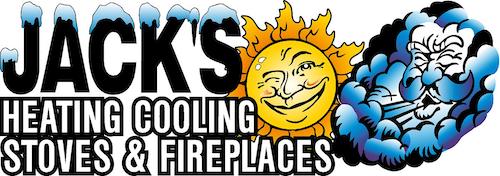When the weather starts to cool off, you might be wondering about how you’ll take full advantage of your heating and cooling. After all, HVAC expenses routinely add up to a significant portion of your monthly electric bill. To try and find ways to lower their HVAC bill, some homeowners take a closer look at their thermostat. Could there be a setting they could use to improve efficiency?
The bulk of thermostats include both a ‘Fan’ or ‘Fan On’ setting. But if the fan is going during a normal cycle, what can the fan setting offer for an HVAC system? This guide should help. We’ll share what exactly the fan setting is and whether you can use it to cut costs in the summer or winter.
What Is the Fan Setting on My Thermostat?
For the majority of thermostats, the fan setting indicates that the system’s blower fan stays on. Some furnaces will run at a low level in this setting, but for the most part heating or cooling isn’t being made. The ‘Auto’ setting, conversely, will run the fan over a heating or cooling cycle and switch it off after the cycle is over.
There are pros and cons to using the fan setting on your thermostat, and whether you do or don’t {will|can|should]] depend on your unique comfort preferences.
Advantages to utilizing the Fan/On setting:
- You can keep the temperature in every room more balanced by permitting the fan to keep generating airflow.
- Indoor air quality can increase because constant airflow will keep forcing airborne pollutants into the air filter.
- Fewer start-stop cycles for the system’s fan helps lengthen its life span. As the air handler is typically part of the furnace, this means you can minimize the risk of needing furnace repair.
Drawbacks to using the Fan/On setting:
- A nonstop fan will likely increase your energy bills somewhat.
- Constant airflow could clog your air filter soon, increasing the frequency you should replace it.
{Choosing Between|Should My Thermostat Be on|Which Setting for My Thermostat? Fan or Auto in Each Season
In the summer, warm air may stick around in unfinished spaces including the attic or an attached garage. If you use the fan setting, your HVAC system can pull this warm air into the rest of your home, compelling the HVAC system to work more to maintain the preferred temperature. In severe heat, this can lead to needing AC repair more often as wear and tear grows.
The opposite can take place in the winter. Cooler spaces like a basement will hold onto cooler air, which may eventually flow into the rest of your home. Leaving the fan running could pump more cold air upward, increasing the amount of heating you need to remain warm.
If you’re still trying to figure out if you should use the fan/on setting, keep in mind that every home and family’s comfort needs are different. Leaving the HVAC system’s fan on may work for you if:
Someone in your household suffers from allergies. Allergies and similar respiratory conditions can be hard on the family. Leaving the fan on should help to improve indoor air quality, helping your family breathe easier.
Your home has hot and cold spots. Lots of homes wrestle with difficult hot and cold spots that quickly return to a temperature different from the rest of the house. The fan setting should help lessen these changes by constantly refreshing each room’s supply of air.
